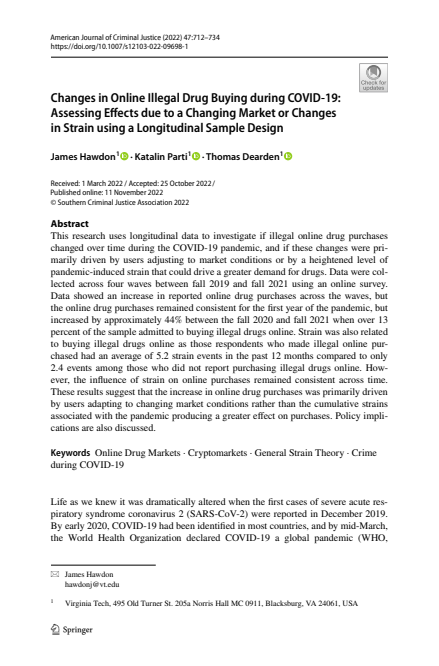By James Hawdon· Katalin Parti Thomas Dearden
This research uses longitudinal data to investigate if illegal online drug purchases changed over time during the COVID-19 pandemic, and if these changes were primarily driven by users adjusting to market conditions or by a heightened level of pandemic-induced strain that could drive a greater demand for drugs. Data were collected across four waves between fall 2019 and fall 2021 using an online survey. Data showed an increase in reported online drug purchases across the waves, but the online drug purchases remained consistent for the frst year of the pandemic, but increased by approximately 44% between the fall 2020 and fall 2021 when over 13 percent of the sample admitted to buying illegal drugs online. Strain was also related to buying illegal drugs online as those respondents who made illegal online purchased had an average of 5.2 strain events in the past 12 months compared to only 2.4 events among those who did not report purchasing illegal drugs online. However, the infuence of strain on online purchases remained consistent across time. These results suggest that the increase in online drug purchases was primarily driven by users adapting to changing market conditions rather than the cumulative strains associated with the pandemic producing a greater effect on purchases. Policy implications are also discussed.
American Journal of Criminal Justice (2022) 47:712–734



